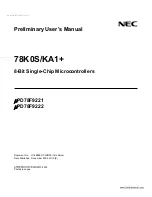
Curtis 1243
GEN
2 Manual
A-1
APPENDIX A: EMC & ESD DESIGN CONSIDERATIONS
APPENDIX A
VEHICLE DESIGN CONSIDERATIONS
REGARDING ELECTROMAGNETIC COMPATIBILITY (EMC)
AND ELECTROSTATIC DISCHARGE (ESD)
ELECTROMAGNETIC COMPATIBILITY (EMC)
Electromagnetic compatibility (EMC) encompasses two areas: emissions and
immunity.
Emissions
are radio frequency (rf ) energy generated by a product.
This energy has the potential to interfere with communications systems such as
radio, television, cellular phones, dispatching, aircraft, etc.
Immunity
is the
ability of a product to operate normally in the presence of rf energy.
EMC is ultimately a system design issue. Part of the EMC performance
is designed into or inherent in each component; another part is designed into
or inherent in end product characteristics such as shielding, wiring, and layout;
and,
fi
nally, a portion is a function of the interactions between all these parts.
The design techniques presented below can enhance EMC performance in
products that use Curtis motor controllers.
Decreasing Emissions
Motor brush arcing can be a signi
fi
cant source of rf emissions. These emissions
may be reduced by installing bypass capacitors across the motor wires and/or
between each motor wire and the motor frame. If the latter approach is used, the
voltage rating and leakage characteristics of the capacitors must be adequate to
meet any safety regulations regarding electrical connections between a battery
operated circuit and the chassis. The bypass capacitor should be installed as close
to the motor as possible, or even inside it, to provide the best performance.
Alternatively a ferrite bead can be installed on the wires, as close as possible to
the motor. In some instances, capacitors and ferrite beads may both be appro-
priate. Another option is to choose a motor with a brush material that will result
in less arcing to the commutator. Brushes that have been run in for approxi-
mately 100 hours will typically generate lower emissions than new brushes
because there is less arcing after they are properly seated.
The motor drive output from Curtis controllers can also make a contri-
bution to rf emissions. This output is a pulse width modulated square wave with
rather fast rise and fall times that are rich in harmonics. The impact of these
switching waveforms can be minimized by making the wires from the controller
to the motor as short as possible. Ferrite beads installed on the drive wires can
further reduce these emissions. For applications requiring very low emissions,
the solution may involve enclosing the controller, interconnect wires, and
motor together in one shielded box. The motor drive harmonics can couple to
battery supply leads and throttle circuit wires, so ferrite beads may also be
required on these other wires in some applications.







































